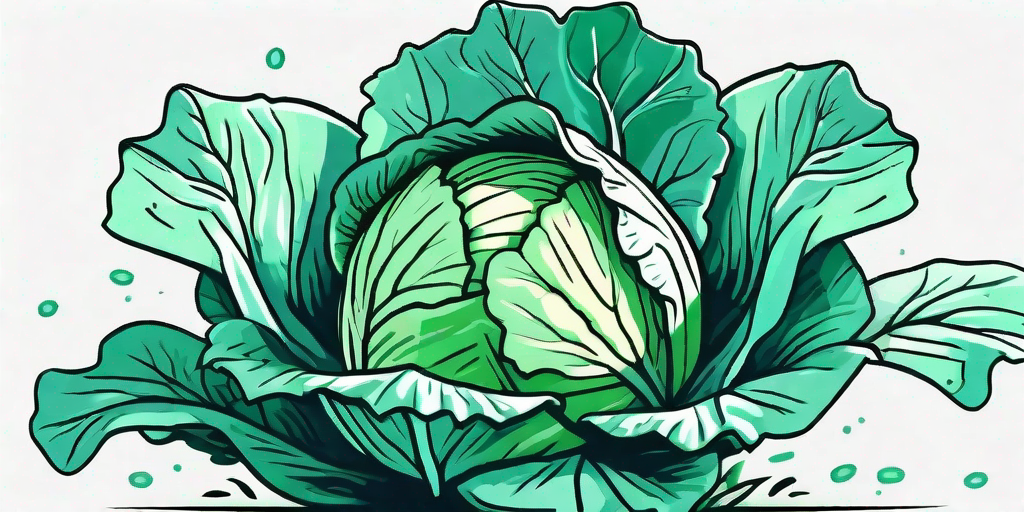
Greetings, green thumbs and cabbage enthusiasts! If you've ever dreamed of growing a cabbage so perfect it could grace the cover of "Gardeners' Weekly," you're in the right place. Today, we're going to delve into the world of cabbage cultivation and reveal the secret to lush leaves and bountiful harvests. Spoiler alert: it's all about the right fertilizer.
Understanding Your Cabbage: A Love Story
First things first, let's get to know our leafy friend. Cabbages are a bit like the divas of the vegetable world. They demand attention, care, and the right conditions to truly shine. But treat them right, and they'll reward you with a performance worthy of a standing ovation.
There are many varieties of cabbages, from the green and red varieties we commonly see in supermarkets, to the more exotic Savoy and Napa cabbages. Each has its own unique needs and quirks, but they all share a common love for rich, well-drained soil and a good dose of sunlight.
The Ideal Soil for Cabbages
Like a Hollywood starlet, cabbages prefer their environment to be just so. They thrive in a slightly acidic soil, with a pH between 6.0 and 6.5. If your soil is more acidic or alkaline, don't despair! Adding lime can raise the pH, while sulfur can lower it.
Drainage is also crucial. Cabbages don't like to have wet feet, so make sure your soil drains well. If it doesn't, consider adding organic matter like compost or well-rotted manure to improve its structure and drainage.
The Importance of Sunlight
Like a sunbathing beauty, cabbages love to soak up the rays. They need at least six hours of direct sunlight each day to grow well. If your garden is more shaded, consider growing your cabbages in containers that can be moved to sunnier spots.
But remember, while cabbages love the sun, they don't like to get too hot. If temperatures soar, they can bolt, or go to seed prematurely. So, in the heat of summer, make sure your cabbages have some shade to retreat to.
The Secret Sauce: Fertilizer
Now, let's get to the heart of the matter: fertilizer. If soil is the stage and sunlight the spotlight, then fertilizer is the script that allows your cabbages to give their best performance.
But not just any fertilizer will do. Cabbages are heavy feeders and need a good balance of nitrogen, phosphorus, and potassium, along with a host of micronutrients. A slow-release, organic fertilizer is often the best choice.
When and How to Fertilize
Timing is everything when it comes to fertilizing cabbages. Start by adding a good dose of compost or well-rotted manure to the soil before planting. This will give your cabbages a good start and help improve the soil structure.
Once your cabbages are in the ground, it's time to start fertilizing. Apply your chosen fertilizer according to the package instructions, usually every two to four weeks. Be sure to water well after applying to help the nutrients soak into the soil.
Choosing the Right Fertilizer
With so many fertilizers on the market, choosing the right one can feel like a daunting task. But don't worry, we've got you covered. Look for a fertilizer that's high in nitrogen to promote leafy growth, but also contains plenty of phosphorus and potassium for overall plant health.
Organic options like fish emulsion, seaweed extract, or compost tea are all excellent choices. They not only feed your cabbages but also improve the overall health and fertility of your soil.
FAQs
Why are my cabbages splitting?
Splitting is often caused by irregular watering. If a cabbage gets too dry and then is suddenly watered heavily, it can cause the head to split. To prevent this, try to keep the soil consistently moist.
What can I do about cabbage pests?
Cabbages can be a magnet for pests like slugs, snails, and caterpillars. Handpicking can be effective, or you can use organic pesticides. Planting companion plants like marigolds or thyme can also help deter pests.
Can I grow cabbages in containers?
Absolutely! Cabbages are quite adaptable and can grow well in containers. Just make sure the container is deep enough for the roots and has good drainage.
Conclusion
So there you have it, the secret to growing the perfect cabbage. With the right soil, plenty of sunlight, and the right fertilizer, you'll be well on your way to a bountiful harvest. Now go forth and cultivate those leafy beauties!
Remember, growing cabbages is not just a hobby, it's a way of life. So, don your gardening gloves, grab your trowel, and let's get growing!











